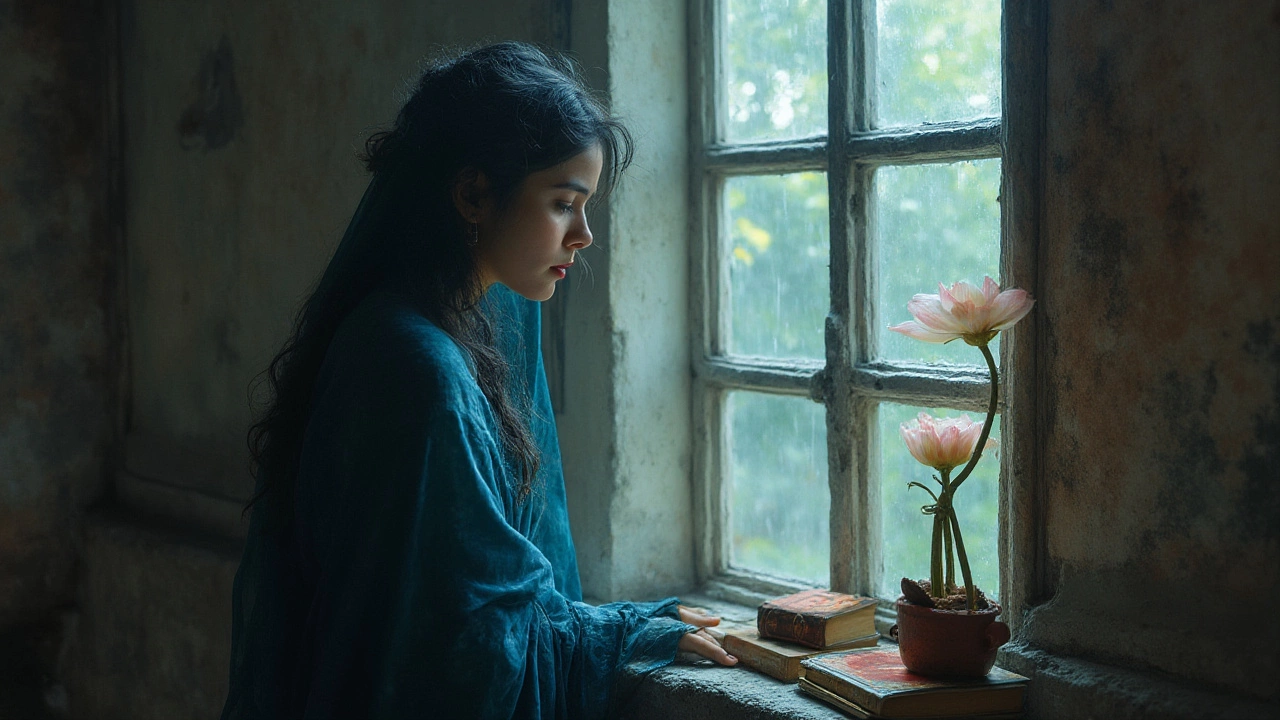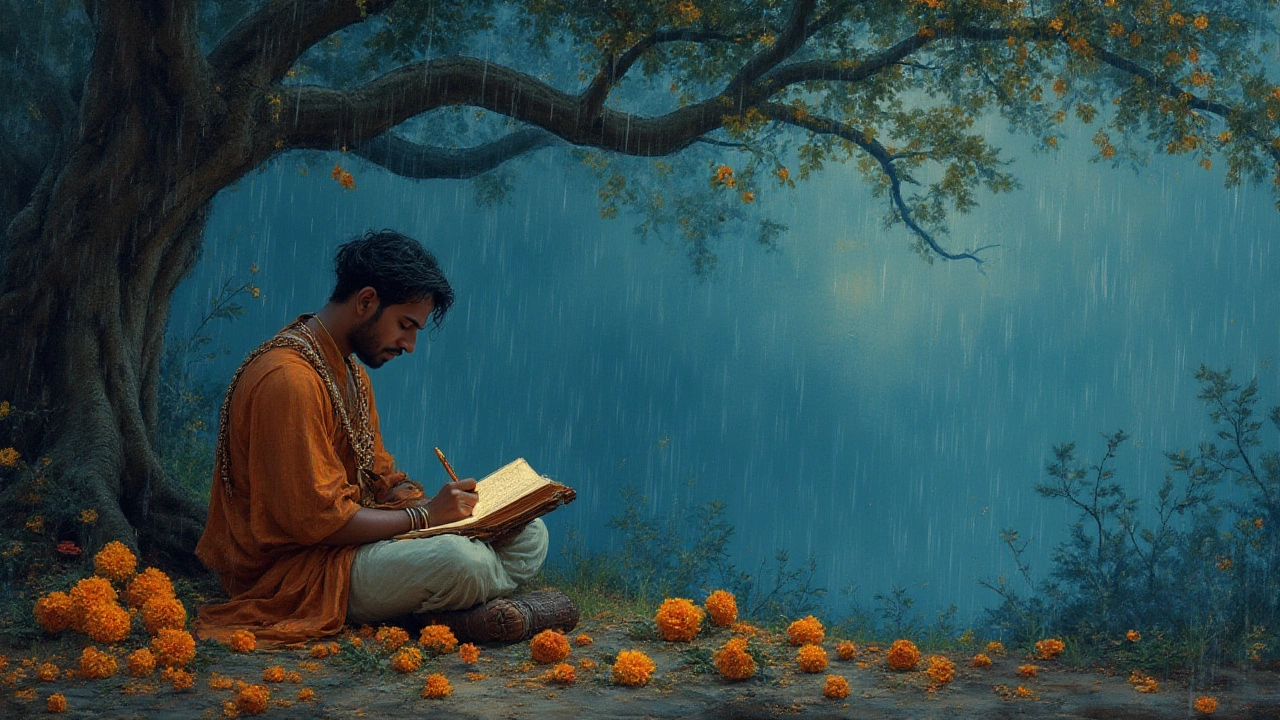You know those moments when sadness creeps in, not with a bang, but with a kind of velvet softness? The kind that sits with you for a while, sinks in, and leaves you changed. No poet in the English language nailed this feeling quite like John Keats. People love to argue about which of his poems is the saddest. There’s an almost endless list—"Ode to a Nightingale," "When I Have Fears," "La Belle Dame sans Merci." But if you ask devoted readers and literary experts, the conversation keeps coming back to "Ode on Melancholy." This isn’t a poem that just wallows in misery—it pulls apart the strange beauty inside sorrow, and refuses to offer easy answers. It stares at sadness, asks it to stay, and bravely turns it over, looking at every dark corner. There’s something brave—and deeply haunting—about the way Keats captures melancholy, so let’s not just recite lines and move on. Instead, let’s get to the bottom of why his words cut so deep, why they still feel painfully fresh two centuries later, and what it actually says about us, right now.
The Making of a Masterpiece: What Inspired Keats’s Deepest Sorrows?
Most poets know sadness as a visitor. For Keats, it was almost a roommate. Born in 1795 in London, Keats’s family was hit by tragedy from day one. His dad died falling off a horse when John was only eight. Tuberculosis took his mother and brother Tom. By age 23, Keats took up poetry the way some turn to therapy. He packed more grief into a few short years than most people ever experience, and with health already failing, he lived every day knowing time was running out fast. But it’s not just doom and gloom for the sake of it—Keats saw beauty wrapped inside sadness. That’s what “Ode on Melancholy” is all about.
The poem was written in 1819, a year that would be a creative explosion for him. He wrote it in a burst with his other famous odes, like “Ode to a Nightingale” and “Ode on a Grecian Urn.” But unlike the others, “Ode on Melancholy” doesn’t sugarcoat things or use a comforting shell. There’s no nightingale to sing him away or beautiful urn to immortalize beauty. Here, melancholy just arrives, sits with you, and demands to be felt. Keats doesn’t recommend fighting it or drowning it—he almost asks you to savor it, the way you might listen to a song you never want to hear again but can’t stop playing. Why is he so obsessed with melancholy? Because he noticed the more you try to avoid it, the bigger it gets. Instead, he suggests, maybe facing sorrow head-on lets you see its strange glow.
Why do so many scholars zero in on this poem as Keats’s saddest? It’s not just gloom for gloom’s sake. It’s about confronting the pain that can come with beauty and happiness—how it’s all part of a bigger picture. Keats had watched his loved ones disappear, his own dreams fade, and even watched London’s world shift around him during the early industrial age. He knew sadness wasn’t just about personal loss; it was almost woven into the business of living. In letters to friends (yes, he was a big letter-writer), he spoke of life’s “negative capability”—this idea of being okay with uncertainty, ambiguity, and even suffering. That’s straight from the heart of “Ode on Melancholy.” It’s not a comforting poem, but it’s an honest one.

Dissecting the Darkness: The Anatomy of "Ode on Melancholy"
If you want to get under the skin of sadness, this is the poem to do it. “Ode on Melancholy” is both brutal and gentle—it never skips over the hard stuff, but it also won’t let you sink. The first draft of the poem even had a stanza about suicide, but Keats cut it, and that’s telling. He wasn’t interested in giving up—he wanted to show what it’s like to feel everything intensely, live with it, and maybe find beauty in its depths.
The structure is nothing fancy—three stanzas, each with ten lines. Instead of telling a story, Keats gives you a set of instructions: don’t numb yourself, don’t ignore pain, don’t chase after death. He paints surreal images: rain-heavy clouds, poison-wild plants, the weeping nightshade flower. Keats’s language almost invites you to taste the bitterness, but then, just when it feels too much, he throws in a curveball: there’s beauty hiding here. He compares depression to a queen, sitting high on her throne, always close to joy and pleasure. The point? If you chase only happiness, you’ll miss out on the rich, bittersweet flavor of living. The famous closing lines are almost a dare—you want to taste what true joy feels like? You have to brave real sorrow first. That’s heavy stuff.
Let’s look at the stats for this poem in detail. It’s only 30 lines, but every line packs a punch. Notice the words Keats uses: “weeping,” “cloud,” “rain,” “droop,” “poisonous,” “wolf’s-bane.” You can almost feel the sadness dripping off the page. The rhythm is tricky—not quite a song, but not heavy prose either. Keats uses iambic pentameter, a heartbeat-like beat, which keeps the sadness moving forward—just like real grief that doesn’t stop, even if you want it to. He was obsessed with senses: every line is packed with things you taste, smell, feel. Even when he mentions “the rich anger of the blood,” he’s describing that weirdly alive feeling people get after crying hard. All that sadness is physical. You wear it, breathe it, taste it. It’s not just an idea in your head.
Here’s something fascinating: Keats’s time was obsessed with “melancholy” in general. Back then, it didn’t mean just feeling blue. It was seen as almost fashionable, even creative, if it didn’t spiral out of control. Painters wore lots of black, musicians wrote dirges, and poets like Keats channeled it into art. He pushes back against the idea that you should always chase happiness. If you only go after what feels good, you’ll miss the depths that make real joy meaningful.
| Feature | Details |
|---|---|
| Written | Spring 1819 |
| First Published | 1820 |
| Length | 30 lines |
| Stanza Structure | Three 10-line stanzas |
| Main Themes | Beauty in sadness, embracing pain, fleeting happiness |
| Notable Images | Weeping cloud, lethe, wolf’s-bane, queen of melancholy |
| Cultural Impact | Considered a cornerstone of English Romantic poetry |
Here’s a tip if you want to really “feel” this poem: read it aloud, slowly. Keats’s word choices were made for the ear, not just the eye. Notice how he weaves in words like “burst,” “drown,” “sink,” and “feed deep”—they pull you into his emotional world, even if you’re just reading from your phone screen at midnight. And don’t skip the last stanza. It’s the emotional payoff, the bittersweet truth bomb that Keats leaves for us to unpack, again and again.

Legacy and Timelessness: Why Keats’s Melancholy Still Hits Hard
The wildest part? “Ode on Melancholy” was ignored for years after Keats published it. Critics thought it was too personal, too weird, or just too sad. He died broke and barely published. Yet now, his name is straight up synonymous with English poetry. Why? Because nobody talked about sorrow with this much honesty (and beauty) before. The Victorians warmed up to him later, and by the 20th century his poems were everywhere—quoted by musicians, taught in schools, and etched into headstones. You’ll even find stars like Nick Cave and Florence Welch talking about how Keats inspired their lyrics. The poem shows up in films and novels whenever someone wants to hit that “deep sadness but also hope” note that’s so hard to capture.
Here in London, you’ll see Keats’s ghost all over the city. There’s Keats House in Hampstead, where you can almost sense the pulse of his words still echoing in the rooms. Tourists snap up postcards with "Ode on Melancholy" quotes. Schoolkids have to memorize his verses. But it’s not just about being part of British heritage. People revisit Keats because he gives voice to that feeling no one wants to admit: sometimes sadness is necessary, and facing it is where real growth happens. Even if you’re not a poetry nerd, the way he writes about grief—messy, unpredictable, shot through with beauty—sounds a lot like real life.
Here’s a practical tip: when you’re going through a rough patch, try journaling in the style of Keats. Don’t sugarcoat. Write about the actual, raw, feeling. Notice what’s beautiful even when it hurts—a ray of light on the wall, the smell of coffee in a silent kitchen. It sounds silly, but it can rewire the way you process sadness, just like Keats did. Sometimes, people even write their own “odes” to tough feelings. It’s cathartic, and it makes you appreciate happiness more when it returns. There are even Instagram communities where users share modern takes on melancholy, updating Keats’s ideas for today’s mental health landscape. Keats would’ve loved that—a world where you’re allowed (even encouraged) to talk openly about pain without being shamed for it.
One of the things that keeps "Ode on Melancholy" in literary conversations is its refusal to offer quick fixes. There’s no “just think positive” message. Instead, it echoes something psychologists say today: leaning into sadness, observing it, and letting it pass, is healthier than bottling it up. Keats seemed to understand this two centuries ago, long before therapy trended on TikTok. His work, especially this poem, is like an old friend who doesn’t judge but just sits with you and lets the moment unfold.
If you’re curious, here’s a short checklist for “living with melancholy” in your own life, Keats-style:
- Don’t rush your feelings. Let them linger, just a bit.
- Notice the beauty mixed in with the pain. It’s always there, hidden somewhere.
- Share your sadness—through art, writing, or music—rather than isolating.
- Remember how temporary both joy and sorrow are, which makes both more precious.
- Read poetry aloud when you feel stuck. Let someone else’s words unlock your own.
So, which Keats poem is the saddest? It’s Ode on Melancholy—not just because it stares straight at suffering, but because it finds a tiny, bright glimmer inside it. Keats never found a cure for his sadness, but he found something better: a language for it. And honestly, that’s why his words still ring true, long after the page has faded.
